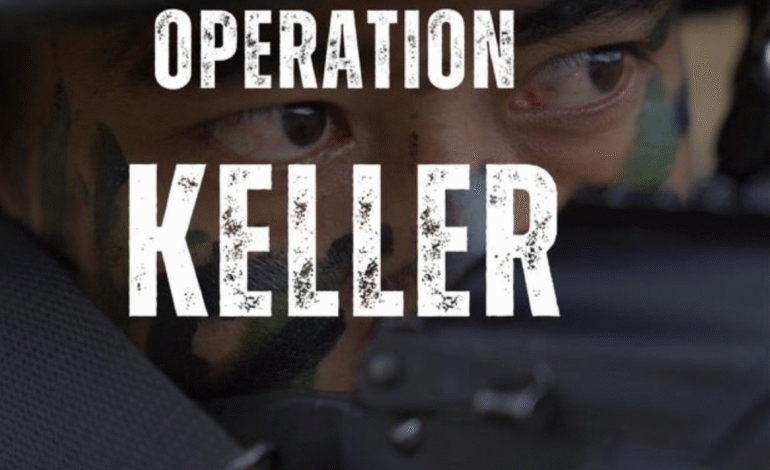Indian Army Launches Operation Keller in Jammu and Kashmir

On May 13, 2025, the Indian Army launched a precise and determined anti-terror operation in the dense forest region of Keller in Jammu and Kashmir’s Shopian district. Named Operation Keller, the mission culminated in the elimination of three heavily armed militants affiliated with Lashkar-e-Taiba (LeT), a Pakistan-based terrorist outfit. This operation came shortly after India’s high-profile Operation Sindoor, a cross-border strike targeting terror camps in Pakistan and Pakistan-occupied Kashmir. While Sindoor represented India’s assertive strategic approach beyond its borders, Operation Keller showcased its readiness and effectiveness in countering internal threats.
The Keller operation was initiated based on credible intelligence provided to a Rashtriya Rifles unit, a specialized division of the Indian Army tasked with counterinsurgency in the region. Acting on this input, the Army launched a search operation in the Shoekal Keller forest area, leading to a fierce encounter that extended across the bordering zones of Kulgam and Shopian. The operation is being widely viewed as a tactical success and a clear demonstration of India’s strengthening anti-terror strategy in the Kashmir Valley.
Identity and Background of the Eliminated Militants
The three militants neutralized in Operation Keller were identified as Shahid Kuttay, Adnan Shafi Dar, and Haris Nazir—all active operatives of Lashkar-e-Taiba. Their deaths are regarded as a significant blow to the terror group’s operations in South Kashmir.
Shahid Kuttay, a resident of Chotipora Heerpora in Shopian, had been active since March 2023. He was involved in several violent incidents, including the attack on German tourists at Danish Resort in April 2024, the killing of a BJP sarpanch, and the murder of a Territorial Army soldier.
Adnan Shafi Dar, also from Shopian, joined LeT in October 2024. Within weeks of joining, he was involved in the murder of a non-local labourer in Wachi, an incident that stirred unrest and highlighted the group’s focus on targeting civilians to create fear and instability.
The third militant, Haris Nazir from Pulwama, was linked to the same Danish Resort shooting and had been actively aiding LeT’s operations in the region. While detailed records of his activities are still under review, security agencies confirmed his role in facilitating militant movement and logistics.
The Encounter: Precision, Firepower, and Strategy
The operation began when intelligence sources reported suspicious movement between the districts of Kulgam and Shopian. Troops from the Rashtriya Rifles tracked the movement deep into the Shoekal Keller forest, where they launched a calculated offensive. The militants responded with heavy gunfire, leading to a sustained firefight. The Army’s response, aided by accurate terrain navigation and combat coordination, resulted in the successful neutralization of the terrorists without any casualties among the troops.
Following the operation, security personnel recovered three AK-47 rifles and a significant quantity of ammunition from the site. The weapons and ammunition pointed to a well-equipped group likely planning attacks in the area. The seamless execution of this operation reflects the Indian Army’s readiness and the effective coordination among its intelligence, reconnaissance, and strike units.
That the encounter began in Kulgam and concluded in Shopian emphasizes both the mobility of militant operatives and the Army’s capability to track and engage threats across district boundaries without operational delays.
The Larger Strategic Message in Today’s Security Climate
Operation Keller unfolds against a backdrop of escalating tensions between India and Pakistan. Just days earlier, the Indian Armed Forces executed Operation Sindoor, a rare cross-border strike in response to the April 22 Pahalgam terror attack that claimed the lives of 26 civilians, including several tourists. Though investigations into the attack continue, Indian authorities strongly suspect the involvement of Pakistan-based terror groups.
In this setting, Operation Keller sends a powerful message about India’s evolving counterterrorism policy—one that integrates both external and internal military responses. The goal is not only to deter state-sponsored terrorism but also to eliminate active threats within India’s borders before they can cause harm. Unlike Sindoor, which involved cross-border coordination and strategic risk, Keller demonstrates the precision and effectiveness of India’s domestic anti-terror operations underpinned by real-time intelligence and rapid response capabilities.
Security experts view these sequential operations as indicative of a doctrinal shift—from defensive posturing to proactive elimination—signaling a broader transformation in how India manages and neutralizes terror threats.
Enhancing Internal Security in South Kashmir
Beyond the immediate success of the mission, Operation Keller contributes significantly to the broader internal security architecture in Kashmir. Each such operation not only removes specific threats but also erodes the logistical and psychological confidence of terrorist groups operating in the region.
Districts like Pulwama, Anantnag, Kulgam, and Shopian have long been strongholds for militant activities. Over the years, security forces have increased patrolling, launched frequent combing operations, and undertaken community engagement to reduce radicalization and prevent recruitment. By targeting militants in forested regions—often used as safe havens—the Army ensures that such groups are denied sanctuaries even in the most challenging terrains.
As terrorist tactics evolve to take advantage of natural cover and borderless movement across district lines, the Army’s evolving strategies, including deep forest combat readiness, are keeping pace with these shifts. Operation Keller is a prime example of these advancements in action.
Rashtriya Rifles and the Intelligence Backbone of the Mission
Operation Keller stands out for the precision with which it was executed, owing in large part to the effectiveness of Rashtriya Rifles. This elite counterinsurgency unit operates with a deep understanding of Kashmir’s geography, demography, and social fabric. Their longstanding presence and operational expertise allow them to act decisively on intelligence inputs.
The mission was based on multi-source intelligence—human intelligence from locals, surveillance feeds, and electronic intercepts. This fusion of traditional and modern intelligence gathering has become the hallmark of recent successful anti-terror missions. As operations grow more data-driven and real-time, the ability to act quickly and effectively has become more critical than ever.
Operations are no longer dependent on brute force; instead, they rely on refined data, surgical strikes, and minimal collateral damage. Keller’s swift execution highlights the growing maturity of such methodologies.
Disrupting Terrorist Momentum Through Targeted Operations
Operations like Keller are designed not just to eliminate existing threats but to prevent future ones. By striking based on credible intelligence and intercepting militant plans in their preparatory stages, security forces make it increasingly difficult for terror outfits to operate with impunity.
Publicly identifying the neutralized militants and highlighting their past crimes serves a dual purpose. It offers closure and assurance to victims and their families while sending a strong deterrent message to potential recruits. These actions are critical in breaking the cycle of indoctrination and recruitment, which is often fueled by misinformation, glorification of militancy, and perceived inaction by authorities.
Importantly, the Indian Army’s increasing transparency in sharing operation details reflects a shift towards better public communication and narrative control—countering disinformation and reinforcing trust in official channels.
Concluding Reflections: Operation Keller’s Role in Regional Stability
Operation Keller was a strategically significant mission that achieved its tactical objectives with precision and effectiveness. It reinforces the Indian Army’s growing reliance on swift, intelligence-led operations to safeguard the nation’s internal security.
In an era marked by hybrid threats, cross-border proxy warfare, and rapidly changing terrorist tactics, the success of such operations is critical. As India navigates these challenges, missions like Keller exemplify its ability to adapt, innovate, and strike with clarity.
Long-term peace in Jammu and Kashmir will depend on continued security operations complemented by political and community engagement. However, immediate threats must be neutralized swiftly to ensure safety and stability—and that is precisely what Operation Keller accomplished.
The timing and success of Operation Keller, in the shadow of Operation Sindoor, underline the emergence of a coherent and multi-layered national security framework. Whether operating across borders or within them, India’s forces are showing an unwavering commitment to defending its sovereignty and citizens from terrorism.







